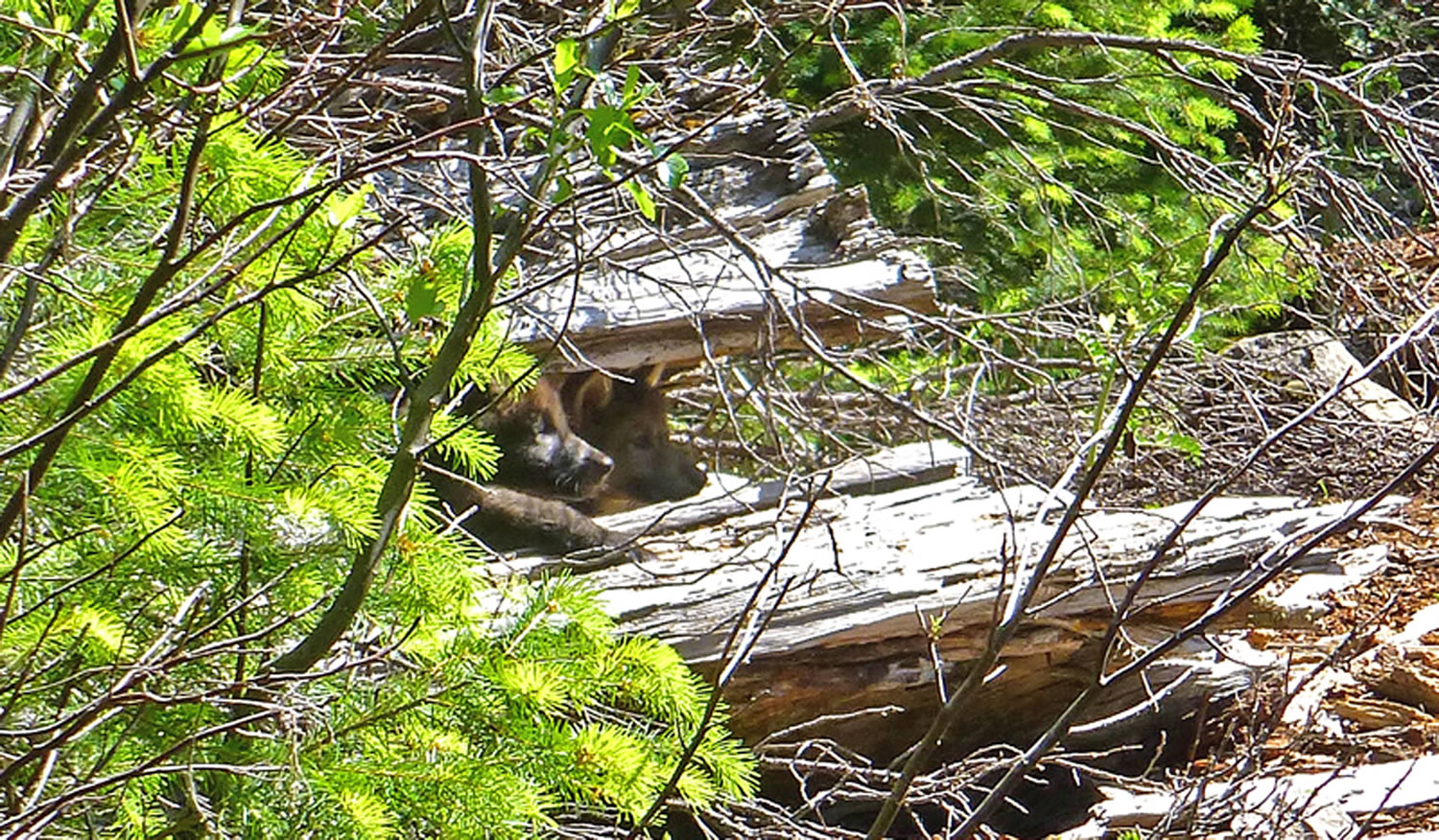GRANTS PASS, Ore. — Oregon’s famous wandering wolf has fathered pups with a mate in the southern Cascade Range — the first confirmed wolf pack in those mountains since the 1940s, officials said Wednesday.
Biologists made the determination after traveling Monday to a site on the Rogue River-Siskiyou National Forest east of Medford, where photos and a GPS tracking collar showed the wolf known as OR-7 has been living with a mate.
They saw two pups peering out from a pile of logs and may have heard more, the U.S. Fish and Wildlife Service and Oregon Department of Fish and Wildlife said.
OR-7 and his mate were nowhere to be seen but could well have been nearby in the dense timber, U.S. Fish and Wildlife Service biologist John Stephenson said.
“It was pretty exciting seeing the pups,” he said. “OR-7 was probably off getting some food. We saw a couple deer (and elk) legs that had obviously been getting chewed on.”
Scientists also saw some ground disturbance where the pack “clearly had been playing around,” Stephenson said.
The discovery marked the farthest west and south a wolf pack has established itself since the animals were reintroduced in the Northern Rockies in the 1990s, he said.
Any wolves that set up house in western Oregon or California are still covered by the U.S. Endangered Species Act, but U.S. Fish and Wildlife is expected to decide in December on a proposal to lift that protection.
The bulk of Oregon’s wolves in the northeastern corner of the state are protected by the state, and California is considering whether to protect any wolves that move there.
OR-7 set off in search of a mate in September 2011, covering thousands of miles from his birthplace in northeastern Oregon to Northern California and back into southwestern Oregon.
OR-7 became famous as his tracking collar chronicled his lonesome wanderings across deserts, highways and mountains. Last winter he began spending his time in a limited area, typical of a wolf that has found a mate. Trail camera photos confirmed it last month.
Stephenson said he went into the area one evening in late April and howled and got a return howl, indicating OR-7 was protecting his territory from other wolves that might want to move in.
“In real wolf country, where you have a lot of wolves, if a lone man is among other wolves in that territory it can be dangerous,” he said. “You can be attacked.”
Stephenson expects the pack to leave the den this summer, moving some distance to what is known as a rendezvous site, where the pups are left behind while the parents hunt.
Stephenson said he has issued an advisory about the wolf to ranchers who will be turning out cattle on federal grazing allotments.
“They are not really excited about it,” he said. “They seem to be taking it in stride. We will be working to take preventative measures.”
No evidence has surfaced that OR-7 has attacked livestock, despite coming from the Imnaha pack, which has been blamed for several livestock attacks in Wallowa County.
“Typically livestock depredation becomes more of a problem in bigger packs,” Stephenson said. “Hopefully we won’t have any problems.”



